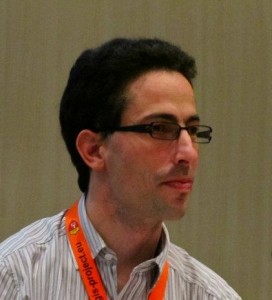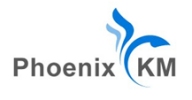
Wim Moeyaert (W.I.T. vzw) was a protagonist in the daily battle towards an inclusive society. He died a few months ago, too young and still full of “inclusion” energy. He had a very important skill set: being a human inclusion library, aware of all possible assistive technology solutions, but equally of legislations, subsidies, accessibility, adaptations, etc. that could further and improve the life of people with disabilities. As a beacon in the overly complicated world of inclusion policies and support, he offered a much needed wisdom guiding light which he shared alike to those most in need via various initiatives (his activities in various NGOs, presentations, lobbying with policy makers, speaker at international forums, etc.). I had the opportunity and luck to know Wim for the past 8 years as a colleague, friend, and a real partner in crime when it concerned inclusion.
As expert user, Wim also went that extra step, to explore new technologies, try them out and share his experiences with the wide community of peers with disabilities in Flanders, Belgium, Europe and beyond, but equally with the producers of such technologies. Such interaction is crucial because assistive technologies do not always work the way they were expected to do. While embracing new technologies, expert users are often confronted with technical limitations, even today. However, as expert user, Wim had a constructive approach: humour replaced frustration, eagerness to improve replaced anger, and knowing things could improve replaced disappointment.
Such expert user expertise is crucial in any research towards inclusive technologies, and therefore deserves the merit that expert users are at the forefront of innovation assessment, interwoven with iterative qualitative user-participatory design and development processes. Expert users aim at ensuring that novice users will be able to use devices and solutions, often technically sound, but user unfriendly. It is the role of an expert user to search the boundaries of solutions, to explore unknown terrain and share their feedback with the wide community. Without these pioneers, assistive technology solutions of nowadays would never have evolved so quickly (and for some not even fast enough), would be inadequate or fail to address the actual assistive technology needs of people with disabilities.
All too often, the time that should be devoted to improving usability is spent on technical development, or is overlooked altogether. A poignant example were the Braille printers introduced by a Japanese company in late 2006. They did the job, printing Braille on regular office paper, however the plotted holes were extremely irritable for users and did not offer a clear Braille reading experience. In fact, they were often disregarded altogether by its core users. It took not long for the competition to recognise this weakness, introducing the printing of embossed dots to form Braille alphabets on paper. I recall talking with the salesperson of this Japanese company at CSUN 2007, pointing out the weaknesses, only being baffled to understand their product had actually never been properly assessed by end-users.
Expert users such as Wim, taught me many things, one of them to be patient yet firm, “if it ain’t working it ain’t working, but tomorrow’s solution will”.
Author: Karel Van Isacker
Source: As published on ENTELIS (The European Network for Technology Enhanced Learning in an Inclusive Society) website.
